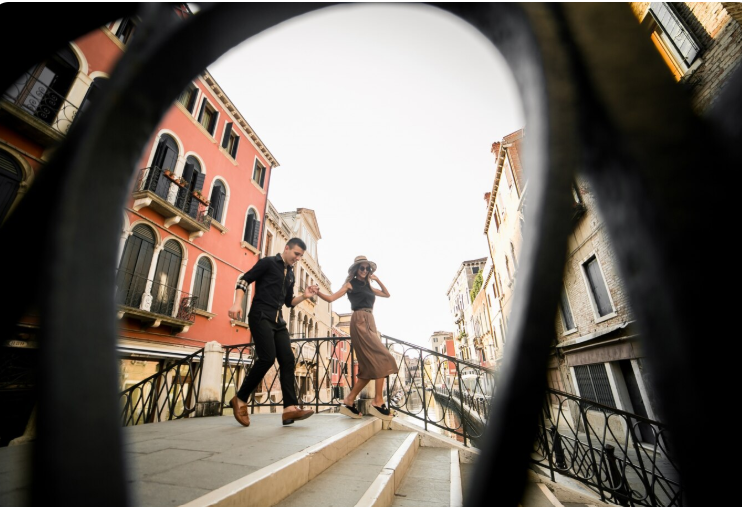Experiencing Italy on a Budget: A Local’s Perspective
Italy is a dream destination for many — a land of timeless art, stunning architecture, passionate people, and of course, unforgettable food. While the allure of luxury villas in Tuscany or five-star hotels on the Amalfi Coast may dominate social media feeds, Italy also offers a rich cultural experience for the budget-conscious traveler. From local secrets to practical strategies, this article shares a local’s perspective on how to experience Italy authentically and affordably.
Travel Off-Peak and Off-Path
One of the best ways to stretch your euros in Italy is by traveling during the shoulder or off-season. Avoiding the summer months of July and August not only helps you escape the crowds but also leads to better deals on accommodation and flights. Consider visiting in late spring (April–June) or early fall (September–October), when the weather is still pleasant and festivals are in full swing.
Additionally, venture beyond the usual tourist cities like Rome, Florence, and Venice. Smaller towns such as Lecce, Lucca, and Orvieto offer equally captivating charm with significantly lower costs. You’ll discover a more intimate side of Italy—one that is welcoming, slower-paced, and deeply rooted in tradition.
Getting Around: Local Transport and Regional Trains
Italy’s extensive train system makes it easy to travel between cities and regions. Opt for regional trains (Treni Regionali) instead of high-speed options like Frecciarossa or Italo. While slower, regional trains are significantly cheaper and perfect for short-to-medium distance travel.
Within cities, public transport is both affordable and efficient. Metro systems in Milan, Rome, and Naples are straightforward, and smaller cities offer reliable buses and trams. Many towns are also very walkable, so lace up your shoes and take advantage of Italy’s scenic streets and piazzas.
Eat Like a Local
Italian cuisine is among the world’s most beloved—and it doesn’t have to break the bank. Avoid tourist-trap restaurants near major landmarks. Instead, look for trattorias and osterias where locals dine. These smaller, family-run establishments offer authentic dishes at a fraction of the price of more touristy venues.
Another local secret: many bars offer an “aperitivo” in the early evening, typically between 6–8 PM. With the purchase of a drink, you gain access to a buffet of appetizers. It’s a budget-friendly way to enjoy light dinner while soaking in the social vibe of the neighborhood.
Also, don’t underestimate the value of local markets. Cities like Palermo, Bologna, and Turin have sprawling food markets where you can find fresh produce, cheeses, bread, and regional specialties. Pack a picnic and dine with a view—whether in a park or by a scenic overlook.
Affordable Accommodations with Character
Forget overpriced hotels—Italy has a variety of charming and affordable lodging options. Agriturismos, or farm stays, are popular in rural areas and provide a unique blend of hospitality, nature, and local cuisine, often at very reasonable rates.
In cities, consider guesthouses (affittacamere), hostels, or Airbnb rentals. Many family-run B&Bs offer breakfast included and provide personal insights about the best local spots. Booking in advance and being flexible with your dates can lead to substantial savings.
Free (or Almost Free) Attractions
Italy’s cultural wealth is unparalleled, and you don’t always have to pay to experience it. Many churches, including some of the most architecturally significant in the world, are free to enter. Walking tours, while often guided for a fee, can be self-led with free apps or guidebooks.
Rome offers free entry to the Vatican Museums (including the Sistine Chapel) on the last Sunday of every month. Museums in Florence and Venice also have monthly or weekly free days. For art lovers, simply wandering the streets often feels like being inside an open-air museum. From Baroque fountains to Renaissance statues, beauty is everywhere—and often free.
Language and Connection
Making an effort to speak a few words of Italian can go a long way—not just in building rapport but also in unlocking local tips and experiences. Locals are often more inclined to share their favorite spots when they see you’re genuinely interested in their culture. Apps like Google Translate can help bridge any gaps, and many young Italians speak at least some English.
Remember, the goal is not just to see Italy, but to experience it. Engage with locals at cafés, join a cooking class, or simply spend time people-watching in a piazza. These are the moments that make travel memorable, and they rarely cost much.
Learning New Languages as an Expat: Strategies for Quick Success
If you’re planning to stay longer or return frequently to Italy, learning the language will enhance every aspect of your experience. Here are a few strategies for rapid progress:
- Immerse Yourself: Switch your phone to Italian, listen to Italian radio, and watch local shows with subtitles.
- Use Language Apps: Duolingo, Babbel, and Mondly can help you build essential vocabulary and phrases.
- Take Local Lessons: Many towns have language centers that offer affordable group classes.
- Practice Daily: Whether it’s ordering coffee or chatting with neighbors, speaking daily helps build confidence.
- Make Mistakes: Don’t worry about being perfect. Italians will appreciate your effort and help you improve.
Language is not just a tool—it’s a passport to deeper understanding, authentic connection, and cultural appreciation. Whether you’re in Italy for a week or a year, speaking the language enriches every moment.
Stay Connected for More Travel and Lifestyle Inspiration
For more insights into travel, culture, and lifestyle tips, follow me on @salvadorordorica. If you’re seeking professional translation and localization services to enhance your global ventures, visit The Spanish Group — your trusted partner in bridging cultures worldwide.



